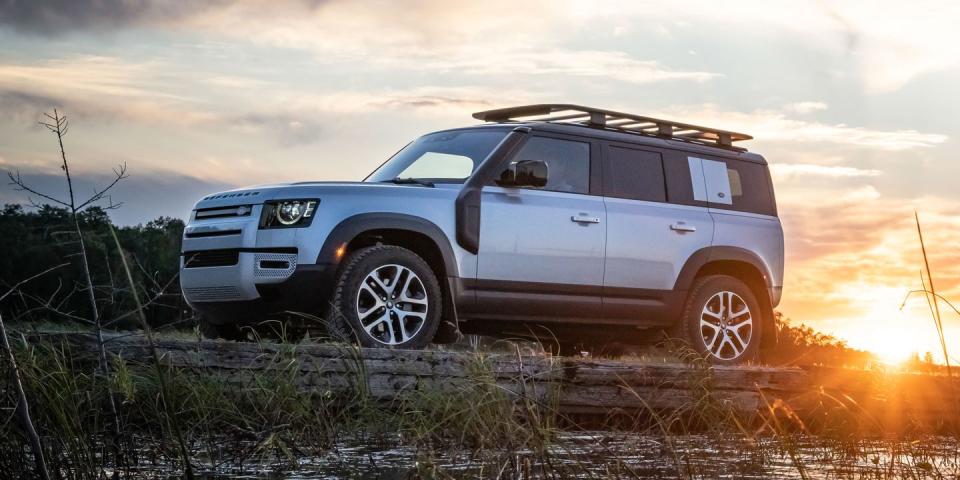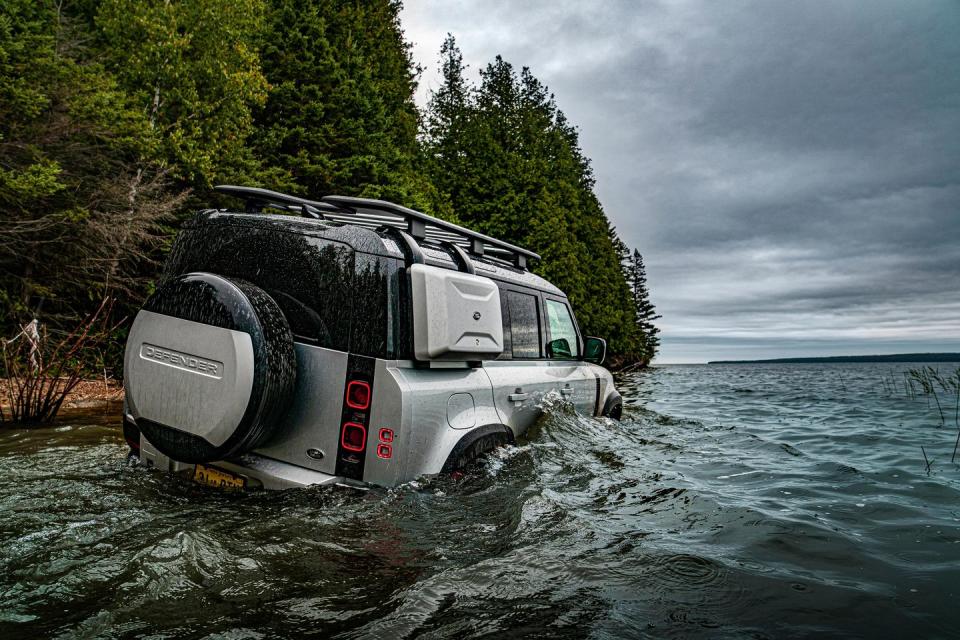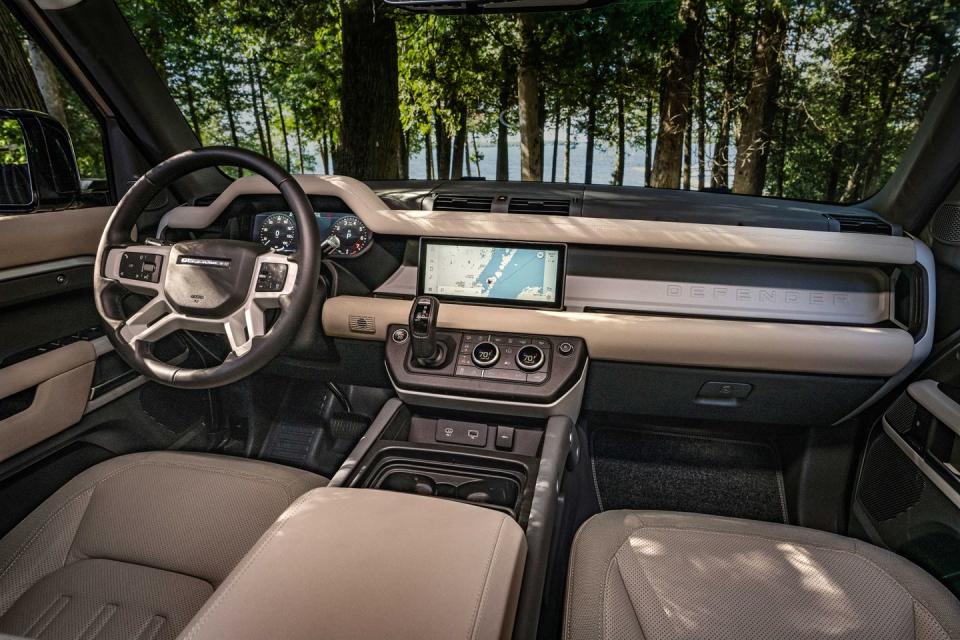Tested: 2020 Land Rover Defender 110 SE Refines an Off-Road Icon


From the November 2020 issue of Car and Driver.
Land Rover has gone soft. While its Range Rovers are striking and urbane, everything in the lineup seems either too precious or too luxurious for mud-slinging off-road misadventure. The Land Rover Defender is supposed to fix that.
More than two decades have passed since Land Rover offered its archetypal nameplate in the U.S. This new one shares nothing with that truck other than a badge, but like the "Jeep Wrangler" and "Ford Bronco" monikers, the words "Land Rover Defender" are more than a name. This SUV has a reputation to maintain, a promise to live up to.
Built on Land Rover's new D7x architecture, the Defender ditches its ancestor's body-on-frame structure and stick axles for unibody construction and independent suspensions. Some might call it soft. Our thoughts? Put away the torches and quit living in the past, man. The Defender is no longer a wartime tool with an FM radio, and it's better for it. It still packs a low-range transfer case, but it derives much of its off-road capability from modern tech like air springs, digital trail spotters via 360-degree cameras, and sophisticated traction-control algorithms.

This new one will bushwhack a path into the woods and pamper your ass on a run to the mall. Our modestly equipped four-door 110 SE stuffed several luxuries into its $82,575 price, including adaptive cruise control, heated everything, and a panoramic roof. It was also dressed for adventure, with an optional electronically controlled rear diff, the most aggressive off-road tires available from the factory, and the $4800 Explorer pack that includes a platform roof rack, an intake snorkel on the driver's-side A-pillar, and an odd little cargo pod hanging off the side.
We took those accessories as a challenge and traveled to Drummond Island, an all-terrain paradise for Jeeps (and their competitors) off the easternmost point of Michigan's Upper Peninsula. For a crisp Andrew Jackson, the Drummond Islander IV will ferry any off-road rig and its keepers across the St. Marys River. From there, the fun begins.

The Defender's air springs pay dividends on Drummond's trails. Days of rain have greased the two-tracks with mud and filled the low-lying areas with water. In the truck's highest setting, 11.5 inches of ground clearance—the same as a Sasquatch-pack four-door Bronco and 0.7 inch more than a Wrangler Rubicon—keep the aluminum bash plates from meeting the suitcase-sized boulders.
It's difficult to grasp the Defender's size until you see it parked next to a Wrangler or navigating a dense forest. A towering 80.6 inches tall with the roof rack (83.5 inches all jacked up), it's barely short enough to duck under most of Drummond's tree limbs, and it's just narrow enough to avoid extensive trail rash on its bulging hips. The previous Defender's square edges have met the aerodynamic router, but any efficiency gains made from smoothing the edges are countered by the Explorer pack's extremities. The roof rack produces more wind noise than a gas-station burrito and most certainly was a factor in our lousy 15-mpg average.
Looking a bit toylike when clean, our Indus Silver example got more rugged with every splash of nature's paint. It rambled down the first trail at a steady pace, rolling effortlessly through deep holes and over small boulders until we were overlooking Lake Huron. It's clear that the "Stay on Trail" signs were hung before the lake rose to a near record level, because the path that once hugged the shoreline is all but gone. With nowhere else to go, we plunged into a chilly freshwater bath.

The Land Rover has a trick up its sleeve for water fording. Ultrasonic sensors on the bottom of the mirrors act as a real-time swim coach, telling the driver how deep he's waded. Officially, the snorkel doesn't increase the fording depth beyond the 110's suggested maximum of 35.4 inches, though it couldn't hurt to have the air intake near the roofline for those who ignore the sensors' warnings before driving off the deep end.
Accessing the Defender's terrain-management system can be confusing at first. You need to push a button on the HVAC control panel to switch the temperature dial to a mode selector. Doing this also brings up a redundant selection method on the 10.0-inch touchscreen. But just like with the Pivi Pro infotainment system, we quickly acclimated to these quirks.

 Yahoo Autos
Yahoo Autos 